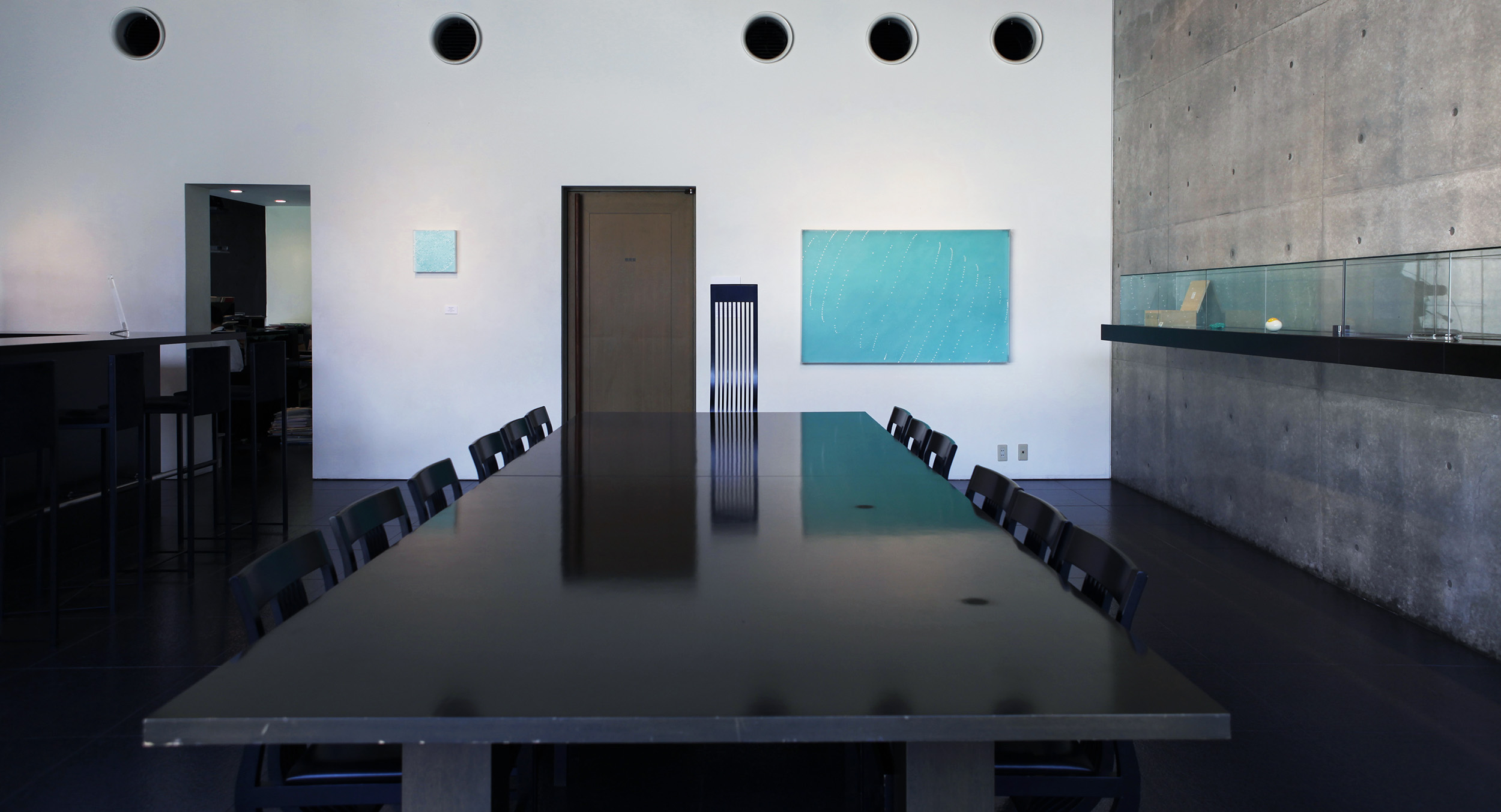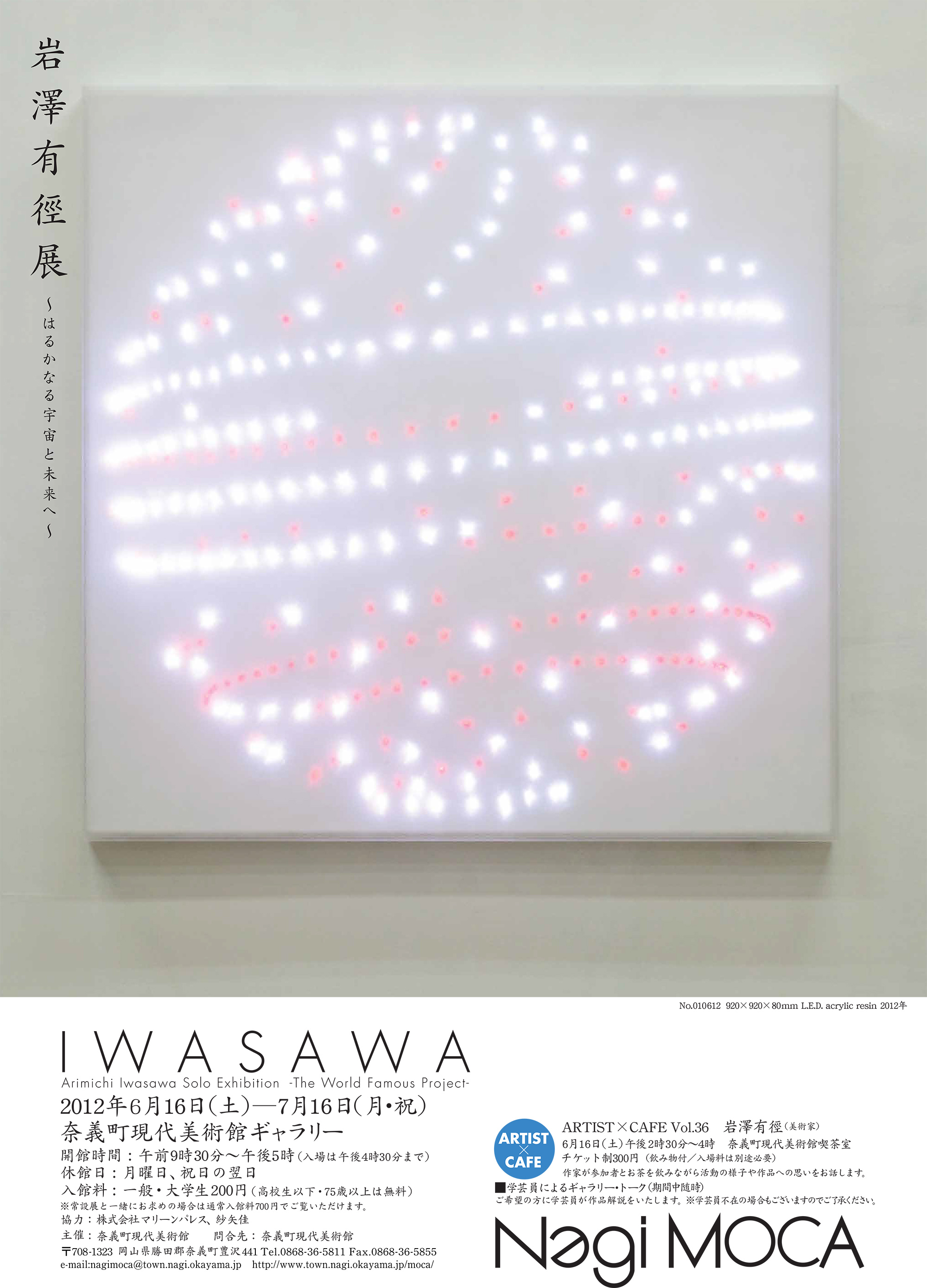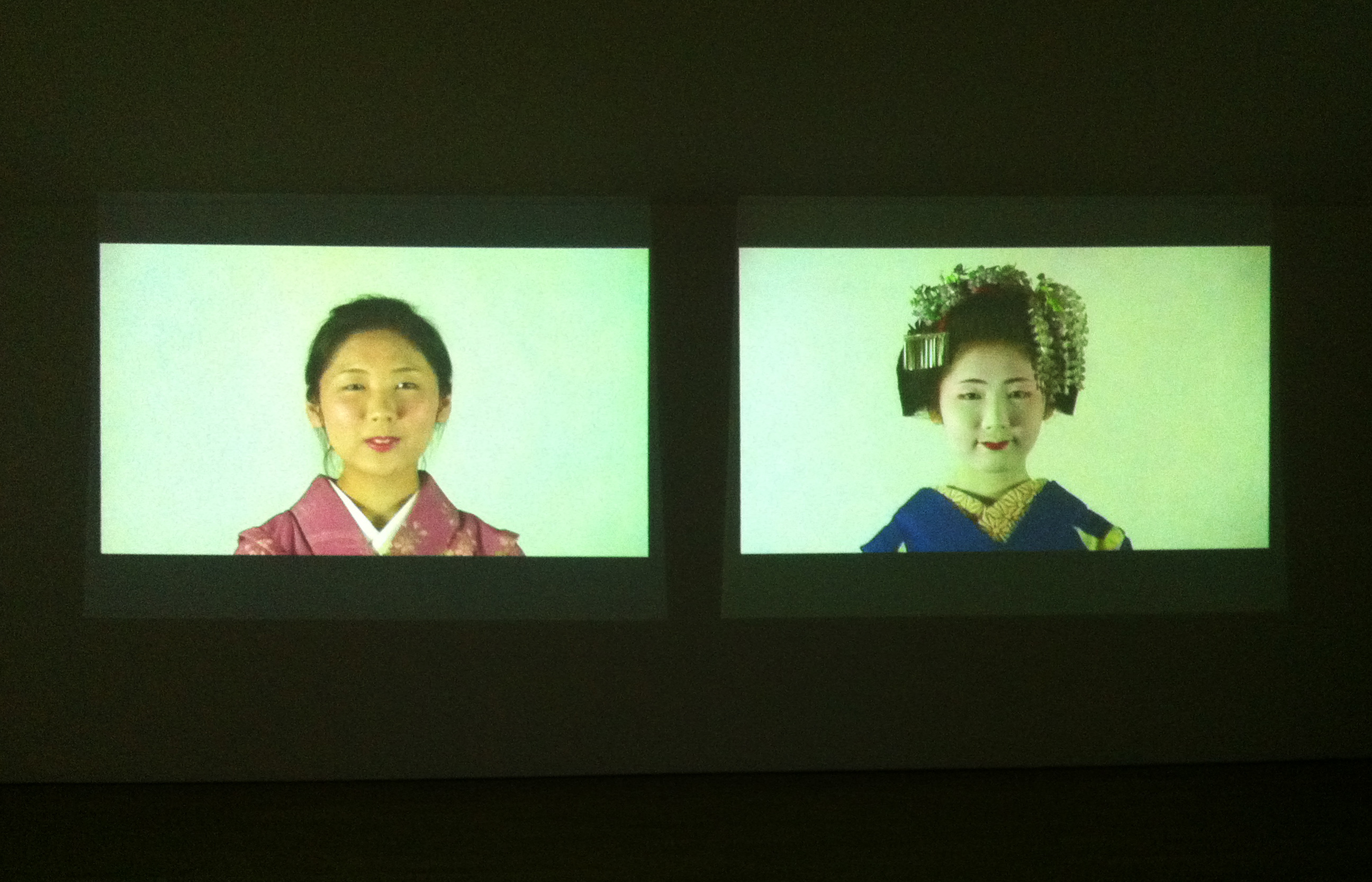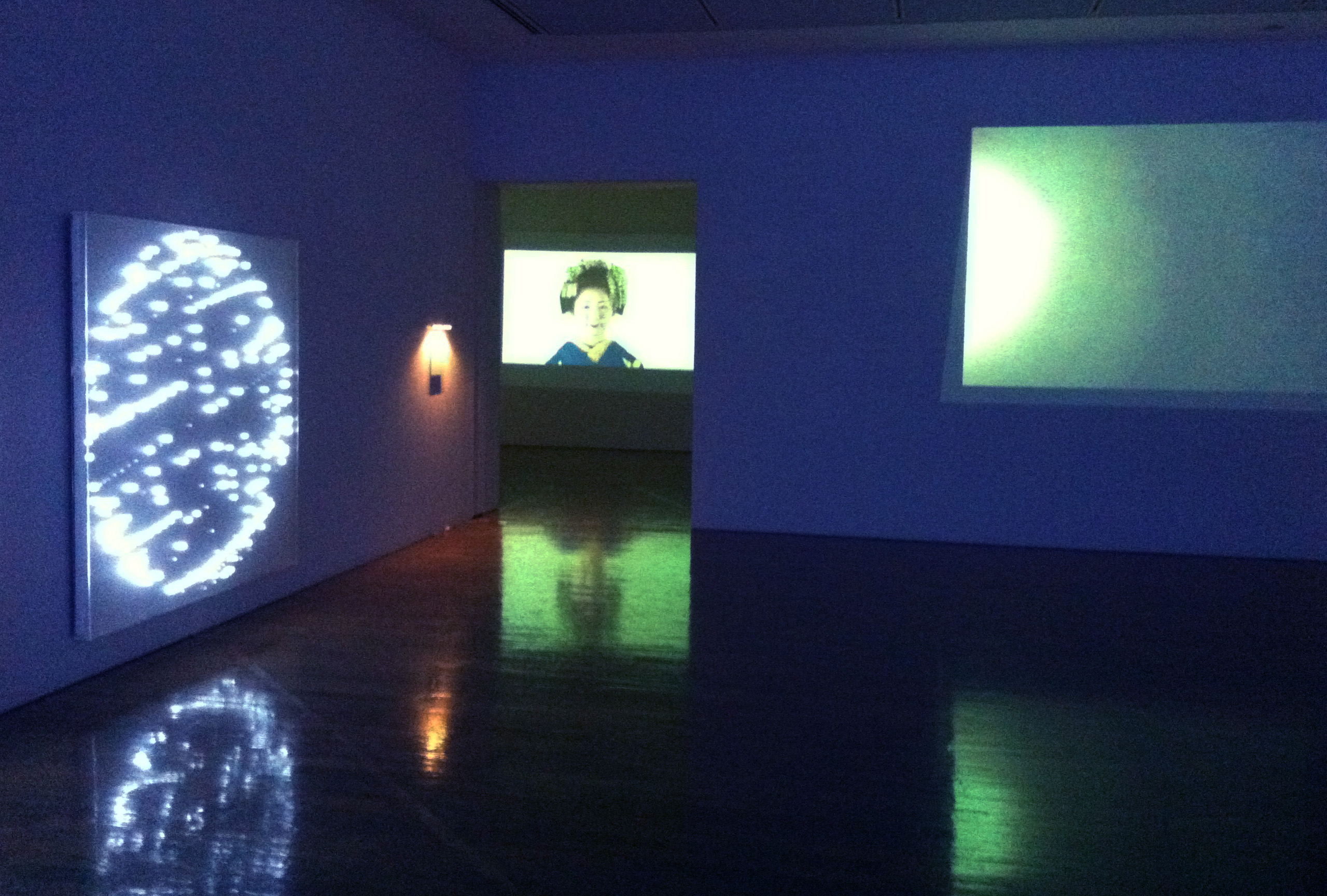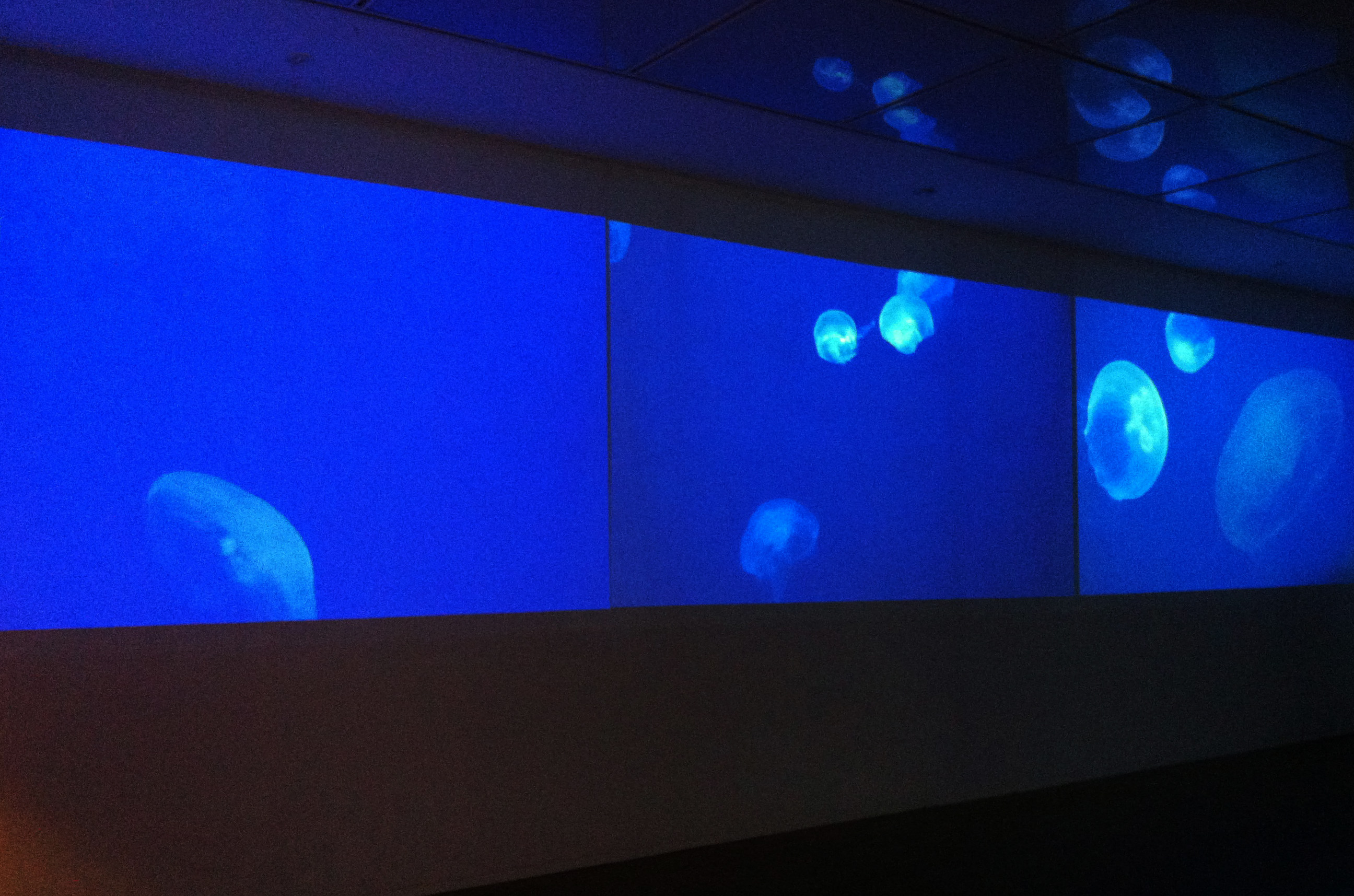Yesterday, Today and Tomorrow of Arimichi Iwasawa
■ Yoshitaro Sakaue
I would like to briefly comment on my most recent view of the painting. I have come to regard, more and more, the process of reviewing paintings created from a personal perspective of the world as a quiet challenge to the consumer society that engulfs the fact that we are humans with humanly needs. In December 2010, an exhibition titled “Ground Combat of Art” was held at Kanagawa Prefectural Hall Gallery. Iwasawa participated in this exhibition and wrote in the catalogue as follows: “The intention for my works is to identify the slot and place of my own existence in the long history of time. We always have the sun and moon around us, and a precious time started flowing when they came into existence. On one hand, there is a creature like jellyfish, the birth of which we are still not certain, and on the other hand, there are civilizations as the products of human history.”This sentence reveals his curious attitude for the creation of works of art.
● The Sun, Moon and Earth In creating an image of the earth, Iwasawa created his own system of alignment using musical notes. He made a special musical score, and used it to determine the positions of the dots to be filled by L E D lights. This became a moving image of the earth. Since about 2004, he started projecting images on the wall, considering this to be in the category of flat painting. Generally “a painting”refers to a drawing of some shapes on a flat surface. However, the conventional deed of “drawing”in the painting may have become too fixed of an idea in our head, maybe a preconceived idea. Iwasawa’s idea of a moving image = two dimensional painting may deserve being listened to. He uses a projector instead of a paint brush, and he likens moving image to paint. As subject matter, he chooses the sun, moon and earth. The earth has both ocean and land mass. The earth is sometimes called “Water Planet.”It was because of the ocean that life was born on the earth. As compared to the cosmos and life, he does not deal much with the earth. Nevertheless Iwasawa showed enthusiasm for participating in this exhibition and gave the following comment: “I am still groping for what I can do with a moving image. Nevertheless, the moving image contains a challenge to the unknown, and it suggests, for me, a subject matter of time and space for our lives.”
● Jellyfish When “KOBE Biennale 2007 --Art Festival Encountered in Port” was held in Kobe in 2007, installations for “Art in Containers Exhibition” were sought from the public, and, of 350 applicants and 356 of their works, 51 works were chosen. Iwasawa’s work was one of them. For the exhibition “THE WORLD FAMOUS PROJECT 6-KOBE,”Iwasawa went to the Tsuruoka City Kamo Aquarium in Yamagata Prefecture to shoot the images of jellyfish. He projected the images on the walls of a container--a space given for the exhibition. Jellyfish must have existed since the genesis of the earth to the present, which makes it the foremost creature among the mollusk family. Seeing the moving image gave me a comfortable rhythm, and my mind wondered off to a past eternal, and for a moment, floated in the temporal-spatial ocean. At the same time, I was pondering on the course of my own life.
● Maiko (From Junior Apprentice (who has entered this world immediately after finishing nine-year compulsory education) to Apprentice Geisha one step before Maiko) At the end of the 19th century, modern painting was in its prime. The golden age was ushered in by the French Impressionists. The art was going beyond flatness and dealing with three dimensional aspects, and was also challenging the expression of the passage of time. The expression of the passage of time was achieved by photography before painting. It was achieved by pairing up two photos. Two photos taken at a different time are simply juxtaposed, and a passage of certain time is automatically indicated. For example, two pictures -one before and the other after the use of an exercise machine -- has become a popular advertisement formula. Eventually, this method was adopted by modern art. Iwasawa expresses the passage of time with a maiko before and after the makeup and dress-up.
● Moving Images of the People of Nagi Town The human figure became central to Western art because Christian dogma postulated that man was created in the image of God. Then, humans, in turn, started creating art. At this exhibition, Iwasawa will create a work that captures the images of the people of Nagi Town, in which the Nagi Contemporary Art Museum, the organizer of this exhibition, is located. In that case, I wonder if he uses the images of the people of Nagi to represent the human existence, which came into being after three billion years of evolution on earth, which could include the history of life in ocean and on land mass. When you make a general survey of his works, we can see that “time” and “space”are important subjects. We live along with the flow of time, and we can name the passage of time as“past,”“present,”and “future.” Iwasawa has long been struggling with the concepts of time and space, and he spurs his creativity day to day. No one doubts that “time”and “space”will continue to be his subjects. Iwasawa’s work with Nagi people will undoubtedly make Nagi people feel art close to them. What kind of impression will the Nagi people have? I am very curious.
Yoshitaro Sakaue / Former Director of Itami City Art Museum, Advisor to BB Plaza Art Museum

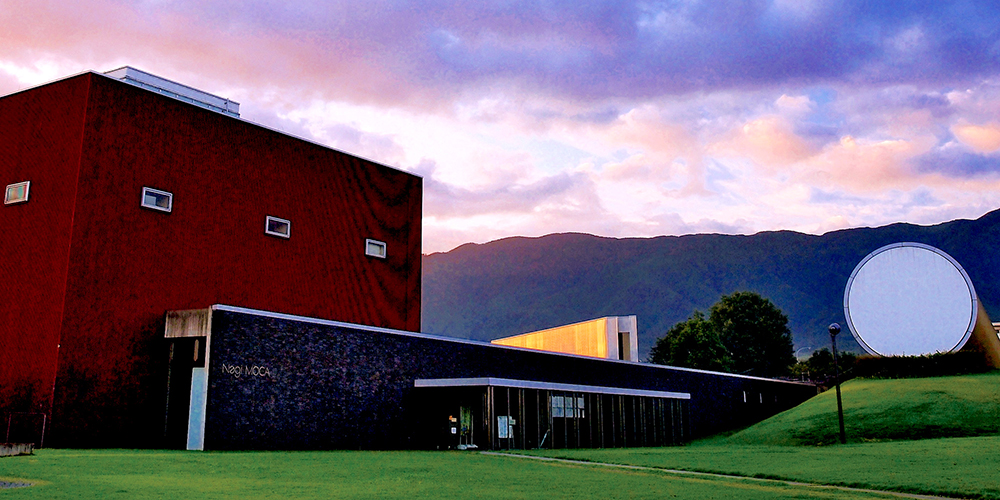
Arimichi Iwasawa To the Cosmos and Future Far Away
■ Kazuaki Kishimoto
Questioning the human activity of “seeing” by way of various media is a universal and eternal theme for the artists of all ages and countries. As one such artist, Arimichi Iwasawa boldly challenges this theme with his own perspective and interpretation. Born in 1958, he studied art at Kuwasawa Design Institute and B Seminar School. After his initial personal exhibition in Tokyo in 1989, he started exhibiting his works at such galleries as in Nagoya, Osaka, Kyoto and also in South Korea almost every year until 2010. He has participated in various group exhibitions enthusiastically both domestic and abroad since 1991. Since the beginning of the 1990’s he emerged as an intellectual hero in Kyoto art circles. Up to now he has been constantly producing works with serenity and the tension of a precise machine that envelopes the observers. He is economical in his manners and actions. He is gentle in manner, yet his discerning eyes bespeak of his strong conviction and will within. I personally admire the fact that he successfully fuse the differing medium of video imagery and painting to create his works. It is pleasant to see such work coming out of a slim artist who stands upright to his full height. Iwasawa always takes into consideration the size and circumstances of the exhibition space. This always leads to a site-specific display which is unique only to that particular place. Of all his works, the one with LED to depict the earth is quite a symbolic representation of his works. The law governing the irregularly blinking lights is based on the notes of a classical musical piece of Iwasawa’s choice, the flashing of the lights reflecting the melody. Light itself represents a concentration of the human population. The imagery of swimming jellyfish is quite mysterious --its shape and movements. Its existence must predate humans somewhere on the time line of evolution. Pondering on this evolutionary process is a befitting activity for Iwasawa. Under the overarching theme of “The World Famous Project,” Iwasawa‘s work series encmpasses such concepts as “Life,” “Birth,”“Time,”“Space,”“(Specific)Location,” “Cosmos,”etc. It so happens that the Nagi Art Museum has exhibition rooms themed “Sun,”“Moon,”and “Earth,”each room mimicking some elements of a respective theme. Iwasawa takes advantage of these themes and overlaps his concepts in order to enhance the display and the meaning of his exhibitions. Iwasawa tries to create a space in which people can meet their deeper selves by encountering the mystery of eternal time and space into which humans were born at one point, and the birth of the earth and its moon, and their enigmatic relationship, and also the specific location and situations--our families and other human relationships-into which we are born. The screen images and paintings resonate with each other. The interaction shows a certain amount of complexity, yet the whole installation has a consistency that speaks to the intellect of the audience. The viewer may show a puzzled look for a moment, then start swaying in an effort to adjust ones senses to the display, but finally forced to allow sub-consciousness to take over. The viewer can experience the worlds of both real and unreal, ordinary and extraordinary at the same time. The installation can be thought of as a sort of magic which is designed to invoke one’s memories and experiences. The viewer can feel or experience oneself and the realities surrounding oneself, and, in the end, realize a deeper level of “Seeing.” “When people see an object, the intrinsic reality of it is supplanted by something superficial,”says Iwasawa. He wants to show how that happens. This installation causes people to think about the line of sight that goes forward and backward, and also the direction of the visual line. It makes us think about the habitual action of “seeing”-- something we do without thinking—by repeating the questions in his images. This can enhance our awareness and deepen our view point.
Kazuaki Kishimoto / Co Director of Nagi museum of Art ( Director now )

■ Art de meat 2017 ▶ installation view
Comment on Arimichi Iwasawa's Works
■ Shuichi Mukai
Back in 2001, when I helped edit the portfolio of Iwasawa’s works, titled “ARIMICHI IWASAWA 1988-2001,”most of his works were painting. He had started creating video image at about the same time when he started painting, and he started exhibiting works in both media at recent exhibitions. Iwasawa has been creating works in painting and video for about 20 years, and I would like to comment on the charm of his works.
“Breathing Painting”
Of his paintings, particularly large ones of three to four meters across, are assembled at the gallery, and dismantled after the exhibition to return to his studio. The part and parcel of his concept is hidden in this procedure. First of all, he assembles the square timbers into a lattice work; secondly, he pitches a colored cloth over it to create a canvas; thirdly, he attaches clear acrylic plates -each 10cm in width- to all sides of the canvas; then he covers the entire thing with a semi-transparent vinyl which has a drawing on it. Air is trapped between the cloth and the vinyl. What is on the surface is a vinyl sheet of 0.1mm thickness. The whole thing is quite sturdy with a thin film on top. The painting underneath the vinyl sheet can be seen through the sheet, creating a double-layered painting. In 1995, before he came up with this creative method, artists were still tied to the convention of painting with paint on canvas, however, this double-layered box proved to be a breakthrough. The film on the surface moves as if the box is breathing, orthe movement of the film resembles the gentle waves during the lull. This, almost illusory effect, is the work of the trapped air between the cloth and vinyl.The work exhibited outdoors had a colored timber frame with two layers of vinyl sheets with drawings on them. Sun light going into the sheets was creating a new expression. The sheets were made of special vinyl that can withstand wind and rain, more durable than it seems. When someone approaches the work, the air movement of the viewer is captured by the thin membrane. The singularity of this device allows us to break away from the“Sequential Interpretation of Meaning/Code” of abstract painting through“Eyeballs → Brain Circuit” to“Eyeballs → Body Circuit.”Later, clear rules (such as that of the regular movements of the sun and moon, etc) were applied to the indeterminate form.LED was incorporated and a dot has evolved to flash according to prescribed intervals. With the most recent series, the concept has become clearer. “ The Breathing Painting”physically invokes the physical sensation. This is a consistent strength of Iwasawa’s works.
“Imagery that Shifts the Time Axis”
“THE WORLD FAMOUS PROJECT”started in 1996. Since then Iwasawa has been creating video images on a parallel with painting. This exhibition is the 11th in the series. Items shown in Iwasawa’s works so far are a walking path in a park, the moon, the sun, a cloud, the cityscape of Manhattan seen from a ferry, a pink ball, which is a toy of the robot dog AIBO, a maiko or apprentice geisha, jellyfish, and airplanes. Depending on the size of the exhibition space, three different images are projected simultaneously or projected on the ceiling. Sometimes two images are shown on a wall with a painting sandwiched in between. Viewers float through various viewpoints and consciousness.When people are asked to close their eyes and feel the passageof one minute without looking at the clock, how accurately can they tell the passing of time? With an experiment with five people, there was a difference of about five seconds among them. The main goal of the video image is not how to scientifically prove the difference in bodily sense, but howto show this difference effectively. The three different images projected on the wall are, from the left, the moon, the sun, and a pink ball. The three moving images are shown simultaneously and they are so edited and processed that each object looses respective identity after some time. Eventually the viewers will be looking at the movement of plain spheres. When people realize that the time axis has been displaced in an artful way, they are already trapped by “Iwasawa Time.” In the case of the video images of “one day in the life of a maiko”all the images -makeup, dress-up, hair making, formal greetings at the teahouse-- are shuffled, and the time line completely reworked. Then, the “documentary film elements”will completely disappear, and it is simply a moving image where viewers can enjoy the elongation and shrinkage of time. The image of jellyfish can be projected on the ceiling or a wall. In another work, there is a projection of moving clouds on either side of his painting. The construction of images differ according to the exhibition space. When I am among Iwasawa’s images, I begin to feel a subtle shift in the “magnetic field of time”and become duped. His experience in holding exhibitions in South Korea, Thailand, New York, and Hungary has contributed to his creating universal video images that go beyond culture. The title of his work “THE WORLD FAMOUS PROJECT”is symbolic of that aspect.
Shuuichi Mukai, art critic
